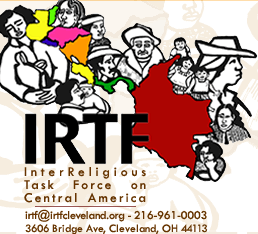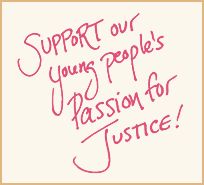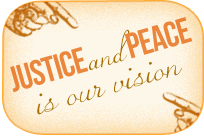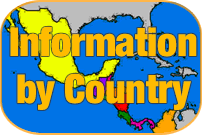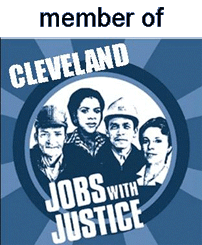Colombia

Since the year 2000, the US has been funding "Plan Colombia" with almost $4 billion—80% for the military—accelerating the armed conflict. US military involvement has steadily increased with approximately $700 million in annual aid packages—one million dollars per day for Colombian security forces. In 2004, Congress doubled the cap on U.S. troops in Colombia, raising it to 800 troops and 600 "advisors." The Bush Administration supports expansion of aerial fumigation in the "war on drugs," while small farmers and indigenous communities suffer the health and environmental impacts of the herbicide.
Human rights and church leaders in Colombia maintain that globalization is behind the war — thousands killed and displaced so that corporate interests can take over resource-rich lands. A lasting peace must address the structural causes of the conflict and protect the millions of non-combatants caught in the crossfire.
WHAT IS THE WAR ABOUT? According to human rights & church leaders in Colombia, globalization is behind the war. Thousands are displaced, "disappeared" and killed so corporate interests can take over resource-rich lands.
WHO IS HURT? Ten people are killed in political violence each day. 3 million are internally-displaced refugees. The indigenous & Afro-Colombians are most affected.
HOW ARE DRUGS INVOLVED? Food crops, water supplies and people are poisoned when the US sprays coca plantations with Monsanto's Round-Up herbicide. To survive, peasants grow coca leaves (cocaine) because prices for legitimate crops are so low.
HOW IS OIL INVOLVED? Colombia has vast oil reserves that international companies drill and export. US ''aid'' has a line-item to guard the pipeline belonging to Los Angeles-based Occidental Oil.
HOW IS THE US INVOLVED? Billions of US dollars go for police and military. In 2002, Congress expanded the US role from counter-narcotics to counter-insurgency--a green light for more US troops on the ground. In 2004, Congress doubled US troops from 400 to 800, and expanded "advisors" to 600.
Background:
The armed conflict in Colombia is complicated and dates back to the late 1950s. Colombia, an oil exporter and leading producer of coffee, is rich in resources and has a moderate population density. But it is also plagued by violence, leads the world in the production of cocaine entering the U.S., and is an important source of heroin. Although violence is often blamed on Colombia's large-scale drug trade, dating from the mid-1970s, politically motivated killings predate this considerably. Nor is violence simply the result of competition over scarce resources. Instead, violence stems from desperate conditions and a political culture that has no tolerance for dissent.
Since the 1950's, Colombia has been ruled by two political parties, Liberal and Conservative, whose struggles have led to civil wars and regional conflicts. During "La Violencia" (1948-1953), the large scale violence between the two parties resulted in the deaths of 145,000 people. For years following, the two parties collaborated in a power sharing arrangement that excluded other political views. However, the hegemony enjoyed by these two parties exacerbated Colombia's inequitable distribution of wealth: the bottom third of the population now has an income share of less than 10% while the top third has an income share of close to 70%. With an economic crisis that includes a near 20% unemployment rate, drug trafficking and political struggle are attractive options. A fierce counterinsurgency war, stemming from La Violencia, pits the Colombian state forces and their paramilitary allies against two major guerrilla forces, the Revolutionary Armed Forces of Colombia (FARC) and the National Liberation Army (ELN).
Since 1987 more than 40,000 noncombatant civilians have been murdered or made to "disappear," mostly by the security forces and their paramilitary allies. In recent years, the proportion of abuses directly attributable to the armed forces has declined while abuses by their paramilitary allies have escalated dramatically. These abuses have resulted in massive internal displacement and refugee flows into Panama and Venezuela. Guerrilla forces have also contributed to internal displacement. Currently, Colombia has more Internally Displaced Persons (IDPs) than any other country in the world, except for Sudan. The UN calls this "the worst humanitarian crisis in the western hemisphere." Over 3.8 million Colombians live as displaced persons; over 1,000 are displaced daily.
Afro-Colombian communities are one of the most affected by the conflict and now constitute 40 percent of Colombia's 3.8 million internally displaced persons. These communities, concentrated in the northwest of Colombia, consist of extreme poverty, racial discrimination, and ongoing violence. Whether they are "caught in the crossfire" or specifically targeted, Afro-Colombians are often forced to leave their communities and ancestral lands behind. Meanwhile, in a futile attempt to eradicate drugs, aerial spraying is destroying many of the food crops traditionally grown by Afro-Colombians, leading to further displacement and insecurity.
In addition to those living in areas of guerrilla activity, victims of the violence include perceived or actual government opponents: human rights defenders, lawyers, judges, peasant activists, trade unionists, teachers, and students. For their part, the guerrillas target those suspected of collaborating with the armed forces or the paramilitaries, and they fund their insurgency by taking hundreds of hostages for ransom.
In urban and rural areas, state army linked paramilitary death squads such as the AUC (Autodefensas Unidas de Colombia, or United Self-Defenses of Colombia), the largest right-wing paramilitary group, target political activists and those labeled socially undesirable. These paramilitary forces work with the drug traffickers, who have also targeted those who oppose their operations. With their wealth, drug traffickers and paramilitaries have become large landowners and have come into direct conflict with guerrillas and peasants.
As documented by the US State Department and human rights groups, the Colombian military and government collaborates with the AUC. The AUC is responsible for 85% of civilian massacres and is designated as a "terrorist organization" by the US government. These state sponsored paramilitary death squads have also been hired by United States multinational corporations such as Coca-Cola, Chiquita Banana, and Occidental Oil to assassinate labor leaders and human rights activists. Human rights and church leaders contend that economic globalization is behind the war in Colombia. Thousands are killed and displaced so that corporate interests can take over resource-rich lands.
In 1999, the Pastrana Administration unveiled its multidimensional proposal "Plan Colombia," contingent upon the provision of aid from the U.S. and European countries. With the conflict intensifying even as peace talks proceeded, the Clinton Administration responded in January 2000 with an aid package heavily weighted toward security (police and military) assistance.
The Bush Administration endorsed hard-line President Alvaro Uribe. After taking office in 2002, Uribe installed a state of emergency, allowing security forces to tap phones, search houses, detention without warrants and establish military control in some areas. In 2002, the US Congress officially expanded the US mission in Colombia from counter-drugs to counter-insurgency under plan Colombia. This gave a green light to the US military to assist Colombian armed forces in their battles against insurgent groups, despite a record of human rights abuses by Colombian soldiers and officers, many of them trained at the US School of the Americas (aka Western Hemisphere Institute for Security Cooperation). For example, in November 1995, SOA graduate Gen. Luis Zapata's 17th Army Brigade threw grenades at civilians and killed one member of the Peace Community of San Jose de Apartado. In February 2005, eight Peace Community members were massacred (including 3 children) by the 17th Brigade. Another SOA grad killed Catholic Archbishop Isais Duarte in 2002.
Environmental Contamination: Originally packaged as an anti-narcotics initiative, Plan Colombia has made aerial spraying a priority. The Monsanto-manufactured herbicide glyphosate is sprayed to eradicate opium poppy and coca plants, causing ecological destruction in the Amazon basin. Tens of thousands of gallons of toxic herbicides are sprayed on coca plants, family farms, bean fields, banana plantations, water supplies, and the Amazon rainforest. This has disastrous effects on Amazon bio-diversity and legal food crops. In addition to affecting the livelihood of legal farmers and leading innocent families to starvation, there is evidence that glyphosate is making people and animals sick. And yet fumigation does not stop production of coca; it merely moves to other areas.
For several years the InterReligious Task Force on Central America has advocated a peaceful resolution to the armed conflict in Colombia. Here are some ways in which IRTF has responded to the humanitarian crisis.
RAPID RESPONSE NETWORK protests intimidation, threats and harassment of women's and labor groups, church and human rights leaders.
HUMAN RIGHTS PROMOTERS such as Zulia Mena, the first Afro-Colombian congresswoman in Colombia, came to Cleveland through IRTF, speaking to schools, congregations, & members of Congress.
CLEVELANDERS TO COLOMBIA. IRTF members have gone to Colombia to see and hear from the people themselves. (If you want to learn the impacts of US military training, go to Colombia and ask the people there about the violence they face daily.)
PARTNER COMMUNITIES. IRTF networks with small communities and church groups to establish direct ties between the people of Northeast Ohio and the people of Colombia.
SUPPORT DISPLACED COMMUNITIES IRTF sells hand-crafted items from women's cooperatives to share the women's stories of violence, displacement and survival.
STOP KILLER COKE. IRTF promotes the campaign to stop Coca-Cola from killing union leaders at its Colombian bottling plants. IRTF hosted political refugee Luis Cardona, who escaped assassination by Coke's for-hire thugs after they killed his co-worker. A case is pending in U.S. federal court.
ADVOCACY FOR POLICY CHANGE. Each spring, IRTF takes students and others to Washington, DC, to meet with their U.S. senators and representatives to advocate for an end to harmful aerial spraying, less military aid, judicial reform, and more support for refugees and economic development.
Our advocacy efforts are paying off.
Thank to your efforts we have seen some positive moves by the United States in relation to Colombia. The US House of Representatives recognized 2007 as the Year of the Rights of Internally Displaced Persons in Colombia, to ensure they receive assistance and protection to rebuild their lives. The resolution was co-sponsored by Ohio congresspersons Kucinich and Sutton.
And more importantly, The FY 2008 Foreign Aid bill included the first positive trends in US aid for Colombia: cutting military aid and increasing humanitarian aid. Also significant were increases in support for:
- judicial reform
- internally displaced people
- rural economic development
- dismantling paramilitary networks
The aid package also reduced aerial fumigation and increased health protections for the public. Moreover, more of the aid is contingent on Colombia meeting certain human rights conditions.
How can you help? Carry the voices of peace and human rights in Colombia to the halls Congress. They urge that the United States...
- Cut military assistance. The Colombian armed forces get hundreds of millions of US dollars each year, despite their documented collaboration with illegal paramilitary groups, which traffic drugs, assassinate civilians, and are on the US terrorist list.
- Strengthen democracy; support judicial reform and civil rights.
- End US-sponsored fumigation. Spraying Monsanto's herbicide glyphosate is not stopping the flow of cocaine, and it has devastating effects on the Colombian people: destroys food crops, poisons water supplies, damages the environment, threatens human health and drives rural farm families from their homes.
- Hold Colombia and the U.S. State Department to accountability. Tie human rights conditions to all US aid.
- Urge the Colombian government to conduct full, transparent investigations into army and paramilitary assassinations.
We can continue this positive trend in Colombia with you help. We cannot stop now. Check out the IRTF Legislative Action Page for Colombia.
- Banner photograph by Iain Cuthbertson on Flickr
http://www.flickr.com/photos/bigcuthy/104304835/ - Map of Colombia from WikiPedia.org
http://en.wikipedia.org/wiki/Image:LocationColombia.png - Other site acknowledgements
